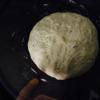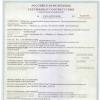The physical characteristics of sound briefly. characteristics of the auditory sensation. Noise protection
Sound as a physical phenomenon is characterized by sound pressure P(Pa), intensity I(W / m 2) and frequency f(Hz).
Sound as a physiological phenomenon is characterized by the level of sound (phones) and loudness (sleeps).
The propagation of sound waves is accompanied by the transfer of vibrational energy in space. Its amount passing through the area
1 m 2, located perpendicular to the direction of propagation of the sound wave, determines the intensity or strength of the sound I,
W / m 2, (7.1)
where E is the sound energy flux, W; S- Area, m2 .
The human ear is not sensitive to sound intensity, but to pressure. R, rendered by a sound wave, which is determined by the formula
where F is the normal force with which the sound wave acts on the surface, N; S is the surface area on which the sound wave falls, m 2 .
The sound intensities and sound pressure levels that have to be dealt with in practice vary widely. Oscillations of sound frequencies can be perceived by the human ear only at a certain intensity or sound pressure. The threshold values of sound pressure at which sound is not perceived or the sound sensation turns into pain are called the hearing threshold and the threshold, respectively. pain sensation.
The threshold of hearing at a frequency of 1000 Hz corresponds to a sound intensity of 10 -12 W / m 2 and sound pressure 2 10 -5 Pa. At a sound intensity of 1 W/m 2 and a sound pressure of 2·10 1 Pa (at a frequency of 1000 Hz), a feeling of pain in the ears is created. These levels are called the threshold of pain and exceed the threshold of hearing by 10 12 and 10 6 times, respectively.
To assess the noise, it is convenient to measure not the absolute value of the intensity and pressure, but their relative level in logarithmic units, characterized by the ratio of the actually created intensity and pressure to their values corresponding to the hearing threshold. On a logarithmic scale, an increase in the intensity and pressure of sound by 10 times corresponds to an increase in sensation by 1 unit, called white (B):
 , Bel, (7.3)
, Bel, (7.3)
| (9.3) |
where I o and R o - initial values of intensity and sound pressure (intensity and pressure of sound at the threshold of hearing).
For the initial figure 0 (zero) Bel adopted threshold for hearing the value of sound pressure 2·10 -5 Pa (threshold of hearing or perception). The entire range of energy perceived by the ear as sound fits under these conditions in 13-14 B. For convenience, they use not white, but a unit 10 times smaller - decibel (dB), which corresponds to the minimum increase in sound strength distinguishable by the ear.
At present, it is generally accepted to characterize the noise intensity in terms of sound pressure levels, determined by the formula
 , dB, (7.4)
, dB, (7.4)
where R- RMS value of sound pressure, Pa; R o - initial value of sound pressure (in air Р o = 2·10 -5 Pa).
The third important characteristic of sound, which determines its height, is the frequency of vibrations, measured by the number of complete vibrations made during 1 s (Hz). The oscillation frequency determines the pitch of the sound: the higher the oscillation frequency, the higher the sound. However, in real life, including in production conditions, we most often encounter sounds with a frequency of 50 to 5000 Hz. The human hearing organ reacts not to an absolute, but to a relative increase in frequencies: a doubling of the oscillation frequency is perceived as an increase in tone by a certain amount, called an octave. Thus, an octave is a range in which the upper limit frequency is equal to twice the lower frequency.
This assumption is due to the fact that when the frequency is doubled, the pitch changes by the same amount, regardless of the frequency interval in which this change occurs. Each octave band is characterized by a geometric mean frequency, determined by the formula
where f 1 – lower limiting frequency, Hz; f 2 – upper limiting frequency, Hz.
The entire frequency range of sounds heard by a person is divided into octaves with geometric mean frequencies of 31.5; 63; 125; 250; 500; 1000; 2000; 4000 and 8000 Hz.
The distribution of energy over noise frequencies is its spectral composition. In the hygienic assessment of noise, both its intensity (strength) and the spectral composition in terms of frequencies are measured.
The perception of sounds depends on the frequency of vibrations. Sounds that are the same in intensity, but different in frequency, are perceived by the ear as unequally loud. When the frequency changes, the sound intensity levels that determine the threshold of hearing change significantly. The dependence of the perception of sounds of different intensity levels on frequency is illustrated by the so-called curves of equal loudness (Fig. 7.1). To assess the level of perception of sounds of different frequencies, the concept of the sound volume level is introduced, i.e. conditional reduction of sounds of different frequencies, but the same volume to the same level at a frequency of 1000 Hz.

Rice. 7.1. Equal Loudness Curves
The sound volume level is the intensity level (sound pressure) of a given sound with a frequency of 1000 Hz, which is equally loud with it to the ear. This means that each equal loudness curve corresponds to one loudness level (from loudness level 0, corresponding to the threshold of hearing, to loudness equal to 120, corresponding to the threshold of pain). The loudness level is measured in an off-system dimensionless unit - phon.
Evaluation of sound perception using loudness level, measured in phons, does not give a complete physiological picture of the effect of sound on the hearing aid, because. A 10 dB increase in sound level creates the sensation of doubling the volume.
A quantitative relationship between the physiological sensation of loudness and loudness level can be obtained from the loudness scale. The loudness scale is easily formed taking into account the ratio that the loudness value of one son corresponds to the loudness level of 40 phon (Fig. . 7.2).

Rice. 7.2. Volume scale
Prolonged exposure to noise at high levels of intensity can lead to a decrease in the sensitivity of the auditory analyzer, as well as cause disorders nervous system and affect other functions of the body (disturbs sleep, interferes with hard mental work), therefore, for different rooms and various kinds works, various permissible noise levels are established.
Noise below 30-35 dB does not feel tiresome or noticeable. This noise level is acceptable for reading rooms, hospital wards, living rooms at night. For design bureaus, office premises, a noise level of 50-60 dB is allowed.
Noise classification
Industrial noise can be classified according to various criteria.
By origin - aerodynamic, hydrodynamic, metallic, etc.
According to the frequency response - low-frequency (1-350 Hz), mid-frequency (350-800 Hz), high-frequency (more than 800 Hz).
According to the spectrum - broadband (noise with a continuous spectrum with a width of more than 1 octave), tonal (noise in the spectrum of which there are pronounced tones). Broadband noise with the same sound intensity at all frequencies is conventionally referred to as "white". The tonal nature of the noise for practical purposes is established by measuring in 1/3 octave frequency bands by exceeding the level in one band over the neighboring ones by at least 10 dB.
According to the temporal characteristics, the noise is divided into permanent or stable and non-permanent. Constant noise is the noise, the sound level of which during an 8-hour working day or during the measurement in the premises of residential and public buildings, on the territory of residential development changes in time by no more than 5 dBA when measured on the time characteristic of the sound level meter "slowly".
Intermittent noise is noise whose sound level during an 8-hour working day, during a work shift or during measurements in the premises of residential and public buildings, on the territory of residential development changes over time by more than 5 dBA when measured on the time characteristic of the sound level meter "slowly ".
Intermittent noise can be fluctuating, intermittent and impulsive:
time-varying noise is noise whose sound level changes continuously over time;
intermittent noise - this is noise, the sound level of which changes stepwise (by 5 dBA or more), and the duration of the intervals during which the level remains constant is 1 s or more;
impulse noise is noise consisting of one or more audio signals, each less than 1 s long, with sound levels in dBA I and dBA, measured respectively on the time characteristics "impulse" and "slow", differ by at least 7 dB.
The last two types of noise (intermittent and impulse) are characterized by a sharp change in sound energy over time (whistles, beeps, blows of a blacksmith's hammer, shots, etc.).
Characteristics of constant noise at workplaces are sound pressure levels in dB in octave bands with geometric mean frequencies of 31.5; 63; 125; 250; 500; 1000; 2000; 4000; 8000 Hz, determined by formula (7.4).
It is allowed to take as a characteristic of constant broadband noise at workplaces the sound level in dBA, measured on the “slow” time characteristic of the sound level meter, determined by the formula:
 , dBA, (7.6)
, dBA, (7.6)
where P (A) is the root mean square value of the sound pressure, taking into account the correction "A" of the sound level meter, Pa
A characteristic of intermittent noise at workplaces is the equivalent (in terms of energy) sound level in dBA.
Equivalent (energy) sound level, L A(eq), in dBA of a given intermittent noise, is the sound level of continuous broadband noise that has the same RMS sound pressure as the given intermittent noise over a specified time interval and is determined by the formula
 , dBA, (7.7)
, dBA, (7.7)
where p A(t) is the current value of the root-mean-square sound pressure, taking into account the correction " A"Sound level meter, Pa; p 0 - the initial value of sound pressure (in air p 0 = 2 10 -5 Pa); T– duration of the noise, h.
Through hearing, a person receives about 8% of information.
Noise is a chaotic combination of sounds of different frequency and intensity, adversely affecting the human body.
Noise sources. For example, in shipbuilding, almost all processes of processing raw materials and final products are accompanied by high level noise (at the level of the pain threshold and above) 90 ... 120 dB (and above).
Surf noise, operation of propellers, main and auxiliary engines, etc.
Characteristics of sound vibrations
Sound is mechanical vibrations propagating in elastic media (they do not propagate in airless space). The sound wave is characterized by:
frequency f, Hz;
propagation speed s, m/s;
sound pressure Р, Pa;
sound intensity I, W/m 2 .
The speed of sound propagation in different media is not the same and depends on the density of the material, temperature, elasticity and other properties.
from steel = 4500…5000 m/s;
with liquid ~ 1500 m/s (depending on salinity);
with air = 340 m/s (at 20°С), 330 m/s (at 0°С)
Sound pressure is a power characteristic, for example, for a tuning fork C \u003d P max sin (2rft + c 0). Here is the sound pressure of a pure (harmonic) tone.
The intensity of sound is an energy characteristic, defined as the average energy E per unit time f, referred to the unit area S of the surface perpendicular to the direction of wave propagation:
where c is the density of the air medium kg / m 3;
c is the speed of sound propagation m/s.
The source of sound vibrations is characterized by power W, W.
The impact of noise on the human body and its consequences
Noise is a general physiological stimulus with the most studied influence.
Intense noise with constant exposure leads to occupational disease- deafness.
Noise has the greatest influence at a frequency f = 1…4 kHz.
Noise affects the hearing organs, the brain, the nervous system, causes increased fatigue, weakening of memory, therefore, labor productivity drops and prerequisites for the occurrence of accidents are created.
According to the World Health Organization (WHO), the most sensitive to noise are the operations of collecting information, thinking, and tracking.
Physiological characteristics of noise
Sound with a frequency of 20 Hz to 11 kHz is called audible sound, sound less than 20 Hz is called infrasound, and sound above 11 kHz is called ultrasound.
Noise can be: broadband (frequency spectrum is more than one octave) and tonal, where a discrete frequency takes place. An octave is a band of sound in which the end frequency is twice the start frequency.
According to temporal characteristics, noise can be: constant (changes in the sound pressure level during a work shift are not more than 3 dB) and not constant, which in turn is divided into oscillating, intermittent and impulse. The most dangerous effect on the human body is tonal and impulse noise.
Sound or noise occurs during mechanical vibrations in solid, liquid and gaseous media. Noise is a variety of sounds that interfere with normal human activity and cause discomfort. Sound is an oscillatory movement of an elastic medium perceived by our hearing organ. Sound propagating in air is called by air noise sound transmitted through building structures is called structural. The movement of a sound wave in air is accompanied by a periodic increase and decrease in pressure. The periodic increase in air pressure compared to atmospheric pressure in an undisturbed medium is called sound pressure R(Pa), it is to the change in air pressure that our organ of hearing reacts. The greater the pressure, the stronger the irritation of the organ of hearing and the sensation of loudness of the sound. A sound wave is characterized by a frequency f and the amplitude of the oscillation. The amplitude of the sound wave oscillations determines the sound pressure; the greater the amplitude, the greater the sound pressure and the louder the sound. The time of one oscillation is called oscillation period T(With): T=1/f.
The distance between two adjacent sections of air that have the same sound pressure at the same time is determined by the wavelength x.
The part of space in which sound waves propagate is called sound field. Any point in the sound field is characterized by a certain sound pressure R and speed of air particles.
Sounds in an isotropic medium can propagate in the form of spherical, plane and cylindrical waves. When the dimensions of the sound source are small compared to the wavelength, the sound propagates in all directions in the form of spherical waves. If the dimensions of the source are greater than the length of the emitted sound wave, then the sound propagates in the form of a plane wave. A plane wave is formed at considerable distances from a source of any size.
Sound Wave Velocity With depends on the elastic properties, temperature and density of the medium in which they propagate. With sound vibrations of a medium (for example, air), elementary particles of air begin to oscillate around the equilibrium position. The speed of these oscillations v much less than the speed of propagation of sound waves in air With.
Sound Wave Speed (m/s)
C=λ/T or C=λf
The speed of sound in air at t\u003d 20 ° С is approximately equal to 334, and steel - 5000, in concrete - 4000 m / s. In a free sound field, in which there are no reflected sound waves, the speed of relative oscillations
v = р/ρс,
where R- sound pressure, Pa; ρ - medium density, kg/m 3 ; ρс- specific acoustic resistance of media (for air ρс= 410 Pa-s/m).
When sound waves propagate, energy is transferred. The transported sound energy is determined by the intensity of the sound I. In a free sound field, the intensity of sound is measured by the average amount of energy passing per unit time through a unit surface perpendicular to the direction of sound propagation.
Sound intensity (W / m 2) is a vector quantity and can be determined from the following relationship
I=p 2 /(ρc); I=v∙p:
where R- instantaneous value of sound pressure, Pa; v- instantaneous value of vibrational speed, m/s.
The intensity of noise (W / m 2) passing through the surface of a sphere of radius r is equal to the radiated power of the source W, divided by the surface area of the source:
I=W/(4πr 2).
This dependence determines the basic law of sound propagation in a free sound field (without attenuation), according to which the sound intensity decreases inversely with the square of the distance.
The characteristic of a sound source is the sound power W(W), which determines the total amount of sound energy emitted by the entire surface of the source S per unit of time:
where I n is the intensity of the sound energy flow in the direction of the normal to the surface element.
If an obstacle is encountered in the path of propagation of sound waves, then due to the phenomena of diffraction, the obstacle is enveloped by sound waves. The envelope is greater, the longer the wavelength compared to the linear dimensions of the obstacle. At a wavelength smaller than the size of the obstacle, reflection of sound waves is observed and the formation of a "sound shadow" behind the obstacle, where the sound levels are much lower compared to the sound level affecting the obstacle. Therefore, low-frequency sounds easily bend around obstacles and spread over long distances. This circumstance must always be taken into account when using noise barriers.
In a closed space (industrial premises), sound waves, reflected from obstacles (walls, ceiling, equipment), form a so-called diffuse sound field inside the room, where all directions of propagation of sound waves are equally probable.
The decomposition of noise into its component tones (sounds with the same frequency) with the determination of their intensities is called spectral analysis, and a graphical representation of the frequency composition of the noise - spectrum. To obtain frequency noise spectra, sound pressure levels at various frequencies are measured using a noise meter and a spectrum analyzer. Based on the results of these measurements at fixed standard geometric mean frequencies of 63, 125, 250, 500, 1000, 2000, 4000, 8000 Hz, a noise spectrum is built.
On rice! 11.1, a ... d shows graphs of sound vibrations in coordinates (sound pressure level - time). On fig. 11.1, d...h sound spectra are shown respectively in coordinates (sound pressure level - frequency). The frequency spectrum of a complex oscillation, consisting of many simple tones (oscillations), is represented by a number of straight lines of different heights, built at different frequencies.

Rice. 11.1. Graphs of sound vibrations corresponding to their sound spectra.
The human hearing organ is able to perceive a significant range of sound intensities - from barely perceptible (at the threshold of hearing) to sounds at the threshold of pain. The intensity of sound at the edge of the pain threshold is 10 16 times higher than the intensity of sound at the threshold of hearing. The sound intensity (W / m 2) and sound pressure (Pa) at the threshold of hearing for sound with a frequency of 1000 Hz, respectively, are I 0=10 -12 and p about\u003d 2∙.1O -5.
The practical use of the absolute values of acoustic quantities, for example, for graphical representation of the distribution of sound pressure and sound intensities over the frequency spectrum is inconvenient due to cumbersome graphs. In addition, it is important to take into account the fact that the human hearing organ responds to a relative change in sound pressure and intensity in relation to threshold values. Therefore, in acoustics it is customary to operate not with absolute values of sound intensity or sound pressure, but with their relative logarithmic levels. L taken in relation to the threshold values ρ o or I 0.
One bel (B) is taken as a unit of sound intensity level. Bel is the decimal logarithm of the ratio of the sound intensity I to the threshold intensity. At I/I 0=10 sound intensity level L=1B, at I/I 0=100 L= 2B; at I/I 0=1000 L= 3B, etc.
However, the human ear clearly distinguishes a change in the sound level by 0.1 B. Therefore, in the practice of acoustic measurements and calculations, the value of 0.1 B is used, which is called decibel (dB). Therefore, the sound intensity level (dB) is determined by the relationship
L=10∙lgI/I 0.
Because I \u003d P 2 / ρs, then the sound pressure level (dB) is calculated by the formula
L = 20lgP/P 0 .
The human hearing organ and the microphones of sound level meters are sensitive to changes in the sound pressure level, therefore, noise is normalized and the scales of measuring instruments are graded according to the sound pressure level (dB). In acoustic measurements and calculations, non-peak (maximum) values of parameters I are used; R; W, and their root-mean-square values, which, with harmonic oscillations, are several times less than the maximum ones. The introduction of root-mean-square values is determined by the fact that they directly reflect the amount of energy contained in the corresponding signals received in the measuring instruments, as well as by the fact that the human hearing organ responds to changes in the mean square of the sound pressure.
There are usually several sources of noise in the production room, each of which has an impact on general level noise. When determining the sound level from several sources, special dependencies are used, since the sound levels do not add up arithmetically. For example, if each of the two vibrating platforms creates noise of 100 dB, then the total noise level during their operation will be 103 dB, not 200 dB.
Two identical sources together produce a noise level 3 dB greater than the level of each source.
The total noise level from P sources of equal noise level at a point equidistant from them are determined by the formula
L sum =L+10lg n
where L- noise level of one source.
The total noise level at the design point from an arbitrary number of sources of different intensity is determined by the equation
where L1,..., L n- sound pressure levels or intensity levels created by each of the sources at the design point.
11.2. NOISE ACTION
ON THE HUMAN BODY. PERMISSIBLE NOISE LEVELS
From a physiological point of view, noise is any sound that is unpleasant for perception, interferes with conversational speech and adversely affects human health. The human hearing organ responds to changes in the frequency, intensity and direction of sound. A person is able to distinguish sounds in the frequency range from 16 to 20,000 Hz. The boundaries of the perception of sound frequencies are not the same for different people; they depend on age and individual characteristics. Oscillations with a frequency below 20 Hz (infrasound) and with a frequency over 20,000 Hz (ultrasound), although they do not cause auditory sensations, they objectively exist and produce a specific physiological effect on the human body. It has been established that prolonged exposure to noise causes various adverse health changes in the body.
Objectively, the effect of noise is manifested in the form of increased blood pressure, rapid heart rate and breathing, decreased hearing acuity, weakening of attention, some disturbance in movement coordination and reduced efficiency. Subjectively, the effect of noise can be expressed in the form of headache, dizziness, insomnia, general weakness. The complex of changes that occur in the body under the influence of noise has recently been considered by physicians as "noise disease".
Medical and physiological studies have shown, for example, that when performing complex work in a room with a noise level of 80 ... 90 dBA, an average worker must spend 20% more physical and nervous efforts in order to have labor productivity achieved with a noise level of 70 dBA. On average, we can assume that reducing the noise level by 6 ... 10 dBA leads to an increase in labor productivity by 10 ... 12%.
When entering a job with an increased noise level, workers must undergo a medical commission with the participation of an otolaryngologist, neuropathologist, and therapist. Periodic inspections of workers in noisy workshops should be carried out within the following periods: if the noise level in any octave band is exceeded by 10 dB - once every three years; from 11 to 20 dB - 1 time and two years; over 20 dB - 1 time per year. Persons under the age of 18, and workers suffering from hearing loss, otosclerosis, impaired vestibular function, neurosis, diseases of the central nervous system, and cardiovascular diseases are not accepted to work in noisy workshops.
The basis of noise regulation is to limit the sound energy that affects a person during a work shift to values that are safe for his health and performance. Rationing takes into account the difference in biological hazard 4 noise depending on the spectral composition and temporal characteristics and is carried out in accordance with GOST 12.1.003-83. According to the nature of the spectrum, the noise is divided into: broadband with the emission of sound energy with a continuous spectrum with a width of more than one octave; tonal with the emission of sound energy in separate tones.
Rationing is carried out by two methods: 1) by the limiting noise spectrum; 2) according to the sound level (dBA), measured when the corrective frequency characteristic "A" of the sound level meter is turned on. According to the limiting spectrum, sound pressure levels are normalized mainly for constant noise in standard octave frequency bands with geometric mean frequencies of 63; 125; 250; 500; 1000; 2000; 4000; 8000 Hz.
Sound pressure levels at workplaces in the normalized frequency range should not exceed the values specified in GOST 12.1.003-83. For an approximate noise assessment, you can use the noise characteristic in sound levels in dBA (when the corrective characteristic of the sound level meter "A" is turned on), at which the sensitivity of the entire noise measuring path corresponds to the average sensitivity of the human hearing organ at different frequencies of the spectrum.
Rationing takes into account the great biological hazard of tonal and impulse noise by introducing appropriate amendments.
Normative data on octave sound pressure levels in dB, sound levels in dBA for manufacturing enterprises and Vehicle are given in GOST 12.1003-83. For residential and public buildings, rationing is carried out according to SN 3077-84 “Sanitary standards permissible noise in residential buildings, public buildings and on the territory of residential development.
11.3. NOISE MEASUREMENTS
To measure the noise level, sound level meters are used, the main elements of which are a microphone that converts sound vibrations of the air into electrical ones, an amplifier and an arrow or digital indicator. Modern objective sound level meters have "A" and "Lin" corrective frequency responses. The linear characteristic (Lin) is used when measuring sound pressure levels in the octave bands 63...8000 Hz, when the sound level meter has the same sensitivity over the entire frequency range. In order for the sound level meter readings to approach the subjective sensations of loudness, the sound level meter characteristic “A” is used, which approximately corresponds to the sensitivity of the hearing organ at different volumes. The range of noise levels measured by sound level meters is 30...140 dB.
Frequency noise analysis is performed by a sound level meter with an attached spectrum analyzer, which is a set of acoustic filters, each of which passes a narrow frequency band defined by the upper and lower limits of the octave band. To obtain highly accurate results in a production environment, only the sound level in dBA is recorded, and spectral analysis produced by tape recording of noise, which is decoded on stationary equipment.
In addition to the main instruments (noise level meter and analyzer), recorders are used that record the distribution of noise levels over the spectrum frequencies on paper tape, and a spectrometer that allows you to present the analyzed process on the screen. These instruments capture an almost instantaneous spectral pattern of noise.
11.4. MEANS AND METHODS OF PROTECTION AGAINST NOISE
The development of measures to combat industrial noise should begin at the design stage technological processes and machines, the development of a plan for the production facility and the master plan of the enterprise, as well as the technological sequence of operations. These measures can be: reduction of noise at the source of occurrence; reduction of noise on the ways of its propagation; architectural and planning activities; improvement of technological processes and machines; acoustic treatment of premises.
Noise reduction at the origin is the most efficient and economical. In each machine (electric motor, fan, vibration platform), as a result of vibrations (collisions) of both the entire machine and its constituent parts (gear drives, bearings, shafts, gears), noises of mechanical, aerodynamic and electromagnetic origin occur.
During the operation of various mechanisms, noise can be reduced by 5 ... 10 dB by: eliminating gaps in gears and connections of parts with bearings; application of globoid and chevron connections; widespread use of plastic parts. Noise in rolling bearings and gears also decreases with a reduction in speed and load. Often elevated levels noise occurs when equipment is not repaired in time, when the fastening of parts is weakened and unacceptable wear of parts is formed. Reducing the noise of vibration machines is achieved by: reducing the area of vibrating elements; replacement of gear and chain drives with V-belt or hydraulic ones; replacement of rolling bearings with plain bearings, where this does not cause a significant increase in energy consumption (noise reduction up to 15 dB); increasing the efficiency of vibration isolation, since reducing the level of vibration of parts always leads to a decrease in noise; reducing the intensity of the process of vibration formation due to some increase in the time of vibration.
To reduce the noise of aerodynamic and electromagnetic origin is often possible only by reducing the power or operating speeds of the machine, which will inevitably lead to a decrease in productivity or disruption of the technological process. Therefore, in many cases, when a significant reduction in noise at the source could not be achieved, methods are used to reduce noise along the paths of its propagation, i.e., noise protection covers, screens, and aerodynamic noise silencers are used.
Architectural and planning measures include noise protection measures, starting with the development of a master plan for a construction industry enterprise and a workshop plan. The most noisy and hazardous industries are recommended to be arranged into separate complexes with gaps between the nearest neighboring facilities in accordance with the Sanitary Norms SN 245-71. When planning rooms inside industrial and auxiliary buildings, it is necessary to provide for the maximum possible distance of low-noise rooms from rooms with “noisy” technological equipment.
Rational layout of the production facility can achieve limiting the spread of noise, reducing the number of workers exposed to noise. For example, when vibrating platforms or ball mills are located in a room isolated from other parts of the workshop, a sharp decrease in the level of production noise and improved working conditions for most workers. Lining the walls and ceiling of the production room with sound-absorbing materials should be used in combination with other methods of noise reduction, since only acoustic treatment of the room can reduce noise by an average of 2 ... 3 dBA. Such noise reduction is usually not sufficient to create a favorable noise environment in the production room.
Technological measures to combat noise include the choice of such technological processes that use mechanisms and machines that excite minimal dynamic loads. For example, the replacement of machines using the vibration method of compacting the concrete mixture (vibration platform, etc.) with machines using vibration-free technology for the manufacture of reinforced concrete products, when the molding of products is carried out by pressing or forcing the concrete mixture into a mold under pressure.
To protect workers in industrial premises with noisy equipment, the following are used: soundproofing of auxiliary premises adjacent to a noisy production site; observation and remote control cabins; acoustic screens and soundproof casings; treatment of walls and ceilings with soundproof linings or the use of piece absorbers; soundproof booths and shelters for regulated rest of workers at noisy posts; vibration-damping coatings for housings and casings of vibration-active machines and installations; vibration isolation of vibroactive machines based on various damping systems.
V necessary cases Collective protection measures are complemented by the use of personal noise protection equipment in the form of various earmuffs, earmuffs, and helmets.
11.5. SOUNDPROOFING
Noise propagating through the air can be significantly reduced by installing soundproof barriers in the form of walls, partitions, ceilings, special soundproof casings and screens in its path. The essence of the soundproofing of the fence is that the largest part of the sound energy incident on it is reflected and only a small part of it penetrates through the fence. Sound transmission through the fence is carried out as follows: a sound wave incident on the fence sets it into oscillatory motion with a frequency equal to the frequency of air oscillations in the wave. The oscillating fence becomes a source of sound and radiates it to the isolated room. Sound transmission from a room with a noise source to an adjacent room occurs in three directions: 1 - through cracks and holes; 2 - due to vibration of the barrier; 3 - through adjacent structures (structural noise) (Fig. 11.2). The amount of transmitted sound energy increases with the increase in the amplitude of the fence oscillations. The flow of sound energy
A when meeting with an obstacle, y4 neg is partially reflected, partially absorbed in the pores of the barrier material And absorb and partially passes through the barrier due to its vibrations A prosh - The amount of reflected, absorbed and transmitted sound energy is characterized by the coefficients: sound reflections β=A neg /A; sound absorption α=A absorbed /A; sound conductivity τ=A prosh /A. According to the law of conservation of energy α+β+τ=1. For most building cladding materials used α= 0.1 ÷ 0.9 at frequencies 63...8000 Hz. Approximately the soundproofing qualities of the fence are estimated by the coefficient, sound conductivity m. For the case of a diffuse sound field, the value of the own soundproofing of the fence R(dB) determined by the relationship
Sound insulation of single-layer fences. Soundproofing building envelopes are called single layer if they are made of a homogeneous building material or composed of several layers of different materials, rigidly (over the entire surface) fastened together, or from materials with comparable acoustic properties (for example, a layer of brickwork and plaster). Consider the sound insulation characteristic of a single-layer fence in three frequency ranges (Fig. 11.3). At low frequencies, on the order of 20 ... 63 Hz (frequency range phenomena. The areas of resonant vibrations of fences depend on the stiffness and mass of the sound insulation of the fence is determined by the resonant fences that occur in it, the properties of the material. As a rule, the natural frequency of most building single-layer partitions is below 50 Hz. It is not yet possible to calculate the sound insulation in the first frequency range.However, the definition of sound insulation in this range is not of fundamental importance, since the normalization of sound pressure levels starts from a frequency of 63 Hz.In practice, the sound insulation of the fence in this range is insignificant due to the relatively large oscillations of the fence near the first frequencies of natural oscillations , which is graphically depicted as sound insulation dips in the first frequency range.

Rice. 11.2. Ways of sound transmission from a noisy room to an adjacent one
(Z~3)f 0 0.5f Kp no.
Rice. 11.3. Sound insulation of a single-layer fence depending on the sound frequency I),
At frequencies that are 2...3 times higher than the natural frequency of the fence (frequency range II), sound insulation is determined by the mass per unit area of the fence. The rigidity of the fence in range II does not significantly affect the sound insulation. The change in sound insulation can be calculated quite accurately according to the so-called law of "mass":
R \u003d 20 lg mf - 47.5,
where R- sound insulation, dB; T- weight of 1 m 2 of the fence, kg; f- sound frequency, Hz.
In frequency range II, the sound insulation depends only on the mass and frequency of the incident sound waves. Here, sound insulation increases by 6 dB for each doubling of the mass of the fence or the frequency of the sound (i.e. 6 dB per octave).
In the frequency range III, the spatial resonance of the fence is manifested, in which the sound insulation decreases sharply. Starting from some sound frequency f> 0.5f cr, the amplitude of the vibrations of the fence increases sharply. This phenomenon occurs due to the coincidence of the frequency of forced oscillations (the frequency of the incident sound wave) with the oscillation frequency
fences. In this case, there is a coincidence of the geometric dimensions and phase of the vibrations of the fence with the projection of the sound wave on the fence. The projection of the sound wave incident on the fence is equal to the wavelength of the bending of the fence if the phase and frequency of these oscillations coincide. In the range under consideration, the effect of wave coincidence is manifested, as a result of which the amplitude of the oscillations of the bending waves of the fence increases, and the sound insulation at the beginning of the range drops sharply. The change in sound insulation here cannot be accurately calculated. The lowest frequency of sound (Hz) at which the phenomenon of wave coincidence becomes possible is called critical and calculated by the formula
![]()
where h- thickness of the fence, cm; ρ - material density, kg/m 3 ; E- dynamic modulus of elasticity of the fence material, MPa.
At a sound frequency above the critical one, the rigidity of the fence and internal friction in the material become essential. The increase in sound insulation at f>f cr is approximately 7.5 dB for each frequency doubling.
The above value of the own soundproofing ability of the fence shows how many decibels the noise level behind the barrier is reduced, assuming that then the sounds propagate unhindered, i.e. there are no other barriers. When transmitting noise from one room to another, in the latter the noise level will depend on the effect of multiple sound reflections from internal surfaces. With a high reflectivity of the internal surfaces, the “boom” of the room will appear and the sound level in it will be higher (than in the absence of reflection) and, therefore, its actual sound insulation will be lower R f. The sound absorption of the surfaces of the fence of the room at a given frequency is a value equal to the product of the areas of the fence of the room S by its sound absorption coefficients α ;
S eq =∑Sα
R f \u003d R + 10 lg S eq / S
where S eq- equivalent sound absorption area of the isolated room, m 2 ; S- area of the insulating partition, m 2.
The principle of sound insulation is practically implemented by installing soundproof walls, ceilings, casings, observation booths. Soundproof building partitions reduce noise levels in adjacent premises by 30...50 dB.
Soundproof casings are installed both on individual mechanisms (for example, the machine drive), and on the machine as a whole. The shell design is multi-layered: the outer shell is made of metal, wood and coated with an elastic-viscous material (rubber, plastics) to dampen bending vibrations; the inner surface is lined with sound-absorbing material. Shafts and communications passing through the casing walls are provided with seals, and the entire casing structure must tightly close the noise source. To eliminate the transmission of vibrations from the base of the casing

Rice. 11.4. Soundproof casing: 1- hole for heat dissipation; 2- elastic-viscous material; 3- case; 4- sound-absorbing material; 5- vibration isolator
installed on vibration isolators, in addition, ventilation ducts are provided in the walls of the casing for heat removal, the surface of which is lined with sound-absorbing material (Fig. 11.4).
The required sound insulation of airborne noise (dB) by the walls of the casing in octave bands is determined by the formula
R tr \u003d L-L additional -10lg α region +5
where L- octave sound pressure level (obtained from measurements), dB; L add - permissible octave level of sound pressure at workplaces (according to GOST 12.1.003-83), dB; α - reverberation coefficient of sound absorption of the inner lining of the casing, determined according to SNiP II-12-77. The soundproofing ability of a metal casing 1.5 mm thick calculated according to this SNiP is shown in fig. 11.5.
To protect the operators of concrete mixing units, batching plants from noise, the control panel is located in a soundproof cabin equipped with a viewing window with 2- and 3-layer glazing, sealed doors and a special ventilation system.
Machine operators are protected from exposure to direct sound by means of screens that are located between the source of noise and the workplace. Noise attenuation depends on the geometric dimensions of the screen and the wavelengths of the sound. When the screen dimensions are larger than the wavelength of the sound wave, a sound shadow is formed behind the screen, where the sound is significantly attenuated. The use of shields is justified for protection against high and medium frequency noise

Figure 11.5 Graph of casing soundproofing at standard frequencies
Multi-layered soundproof barriers. To reduce the mass of fences and increase their soundproofing ability, multilayer fences are often used. The space between the layers is filled with porous fibrous materials or an air gap of 40...60 mm wide is left. The walls of the fence should not have rigid connections, and their bending rigidity should be different, which is achieved by using walls of unequal thickness with an optimal ratio of 2/4. The soundproofing qualities of a multilayer fence are affected by the mass of the fence layer. t 1 and m 2, the stiffness of the bonds K, the thickness of the air gap or layer of porous material (Fig. 11.6).
Under the action of variable sound pressure, the first layer of the multilayer barrier begins to oscillate, and these vibrations are transmitted to the elastic material that fills the gap between the layers. Due to the vibration isolating properties of the filler, vibrations of the second barrier layer will be significantly attenuated, and, consequently, the noise generated by vibrations of the second layer of the barrier will be significantly reduced. The greater the rigidity of the material that fills the gap between the layers, the lower the sound insulation of the multilayer fence.
| W |
| 7t |
SC//////////////A
| SCH | To | |
| m2 | ||
U//////////W////,
Rice. 11.6. Principles of soundproofing with multilayer fencing
Theoretically, the sound insulation of a two-layer fence can be 70 ... 80 dB, but due to indirect sound propagation paths (through adjacent structures), the practical sound insulation of a double fence does not exceed 60 dB. To reduce indirect sound transmission, it is necessary to strive to prevent the propagation of bending waves along adjacent structures. For this purpose, it is advisable to isolate the fence from vibration using elastic elements.
Holes and gaps in fences significantly reduce the soundproofing effect. The magnitude of the decrease in sound insulation depends on the ratio of the size of the holes to the length of the incident sound wave, on the relative position of the holes. With hole size d, greater than the wavelength λ, the sound energy transmitted through the hole is proportional to its area. Holes have the greater effect on the reduction of sound insulation, the higher the own sound insulation of the fence. small holes d≤λ in the case of a diffuse sound field, they have a significant effect on the reduction of sound insulation. Holes in the form of a narrow gap lead to a greater reduction in sound insulation (by a few decibels) than round holes of equal area.
11.6. SOUND ABSORPTION
Sound absorption- this is the property of building materials and structures to absorb the energy of sound vibrations. Sound absorption is associated with the conversion of the energy of sound vibrations into heat due to friction losses in the channels of the sound-absorbing material. The sound absorption of a material is characterized by the sound absorption coefficient α, which is equal to the ratio of the sound energy absorbed by the material to the incident sound energy. Sound-absorbing materials include materials with α> 0.2. Lining the internal surfaces of industrial premises with sound-absorbing materials provides noise reduction by 6 ... 8 dB in the reflected sound zone and by 2 ... 3 dB in the direct noise zone. In addition to the cladding of the premises, piece sound absorbers are used, which are three-dimensional sound-absorbing bodies. various shapes, freely and evenly suspended in the volume of the room. Sound-absorbing linings are placed on the ceiling and upper parts walls. The maximum sound absorption can be obtained when facing at least 60% of the total area of the enclosing surfaces of the room, and the greatest efficiency is achieved in rooms with a height of 4...6 m.
∆L = 20lgB 2 /B l
where IN 1 and IN 2- permanent premises before and after its acoustic treatment, determined by SNiP II-12-77
B 1 \u003d B 1000 μ
where B 1000 is the constant of the room, m 2, at a geometric mean frequency of 1000 Hz, determined depending on the volume of the room V,(see below); μ - frequency multiplier, determined from the table. 1.11.
According to the found room constant IN 1 for each octave band, the equivalent sound absorption area (m 2) is calculated:
A \u003d B 1 / (B 1 / S + 1)
where S- the total total area of the enclosing surfaces of the room, m 2.
The reflected sound zone is determined by the limiting radius r pr(m) - distance from the noise source at which the sound pressure level of the reflected sound is equal to the sound pressure level emitted by this source.
When indoors P identical noise sources
![]()
B8000- displacement constant at a frequency of 8000 Hz;
B 8000 =B 1000μ 8000
Premises constant IN 2(m 2) in an acoustically treated room is determined by the dependence
B 2 =(A′+∆A)/(1-α 1)
where A′=α(S-S reg)-equivalent area of sound absorption by surfaces not occupied by sound-absorbing lining, m 2 ; α - the average coefficient of sound absorption in the room before its acoustic treatment;
Lab #5
Audiometry
The student must know: what is called sound, the nature of sound, the sources of sound; physical characteristics of sound (frequency, amplitude, speed, intensity, intensity level, pressure, acoustic spectrum); physiological characteristics sound (height, loudness, timbre, minimum and maximum vibration frequencies perceived by a given person, audibility threshold, pain threshold) their relationship with the physical characteristics of sound; human hearing aid, the theory of sound perception; sound insulation coefficient; acoustic impedance, absorption and reflection of sound, coefficients of reflection and penetration of sound waves, reverberation; physical foundations of sound research methods in the clinic, the concept of audiometry.
The student must be able to: using a sound generator, remove the dependence of the hearing threshold on frequency; determine the minimum and maximum vibration frequencies perceived by you, take an audiogram using an audiometer.
Brief theory
Sound. Physical characteristics of sound.
sound called mechanical waves with an oscillation frequency of particles of an elastic medium from 20 Hz to 20,000 Hz, perceived by the human ear.
Physical name those characteristics of sound that exist objectively. They are not related to the peculiarities of human sensation of sound vibrations. The physical characteristics of sound include frequency, amplitude of vibrations, intensity, intensity level, speed of propagation of sound vibrations, sound pressure, acoustic spectrum of sound, coefficients of reflection and penetration of sound vibrations, etc. Let's briefly consider them.
1. Oscillation frequency. The frequency of sound vibrations is the number of vibrations of particles of an elastic medium (in which sound vibrations propagate) per unit time. The frequency of sound vibrations is in the range of 20 - 20000 Hz. Each specific person perceives a certain range of frequencies (usually slightly above 20 Hz and below 20,000 Hz).
2. Amplitude sound vibration is called the greatest deviation of the oscillating particles of the medium (in which the sound vibration propagates) from the equilibrium position.
3. sound wave intensity(or sound power) is a physical quantity that is numerically equal to the ratio of the energy carried by a sound wave per unit time through a unit area of the surface oriented perpendicular to the sound wave velocity vector, that is:
where W- wave energy, t is the time of energy transfer through the area S.
Intensity unit: [ I] \u003d 1J / (m 2 s) \u003d 1W / m 2.
Let us pay attention to the fact that the energy and, accordingly, the intensity of the sound wave are directly proportional to the square of the amplitude " A» and frequency « ω » sound vibrations:
W~A2 and I~A2 ; W ~ ω 2 and I ~ ω 2.
4. The speed of sound called the speed of propagation of the energy of sound vibrations. For a plane harmonic wave, the phase velocity (the propagation velocity of the oscillation phase (wave front), for example, maximum or minimum, i.e., a bunch or rarefaction of the medium) is equal to the wave velocity. For a complex oscillation (according to the Fourier theorem, it can be represented as a sum of harmonic oscillations), the concept is introduced group velocity is the propagation velocity of a group of waves with which energy is transferred by a given wave.
The speed of sound in any medium can be found by the formula:
where E- modulus of elasticity of the medium (Young's modulus), r is the density of the medium.
With an increase in the density of the medium (for example, by 2 times), the modulus of elasticity E increases to a greater extent (more than 2 times), therefore, with an increase in the density of the medium, the speed of sound increases. For example, the speed of sound in water is ≈ 1500 m/s, in steel - 8000 m/s.
For gases, formula (2) can be transformed and obtained in the following form:
 (3)
(3)
where g = C R /C V is the ratio of molar or specific heat capacities of a gas at constant pressure ( C R) and at constant volume ( C V).
R is the universal gas constant ( R=8.31 J/mol K);
T- absolute temperature on the Kelvin scale ( T=t o C+273);
M - molar mass gas (for a normal mixture of air gases
М=29×10 -3 kg/mol).
For air at T=273K and normal atmospheric pressure, the speed of sound is υ=331.5 » 332 m/s. It should be noted that the intensity of the wave (vector quantity) is often expressed in terms of wave speed:
 or ,(4)
or ,(4)
where S×l- volume, u=W/ S×l is the volumetric energy density. The vector in equation (4) is called Umov vector.
5.sound pressure called a physical quantity, numerically equal to the ratio of the modulus of the pressure force F oscillating particles of the medium in which sound propagates to the area S perpendicularly oriented platform with respect to the pressure force vector.
P=F/S [P]= 1N / m 2 \u003d 1Pa (5)
The intensity of a sound wave is directly proportional to the square of the sound pressure:
I \u003d P 2 / (2r υ), (7)
where R- sound pressure, r- medium density, υ is the speed of sound in a given medium.
6.Intensity level. The intensity level (sound intensity level) is a physical quantity numerically equal to:
L=lg(I/I 0), (8)
where I- sound intensity, I 0 \u003d 10 -12 W / m 2- the lowest intensity perceived by the human ear at a frequency of 1000 Hz.
Intensity level L, based on formula (8), are measured in bels ( B). L = 1 B, if I=10I0.
Maximum intensity perceived by the human ear I max \u003d 10 W / m 2, i.e. I max / I 0 =10 13 or L max \u003d 13 B.
More often, the intensity level is measured in decibels ( dB):
L dB =10 lg(I/I 0), L=1 dB at I=1.26I 0.
The level of sound intensity can be found through sound pressure.
Because I ~ R 2, then L(dB) = 10lg(I/I 0) = 10lg(P/P 0) 2 = 20lg(P/P 0), where P 0 \u003d 2 × 10 -5 Pa (at I 0 \u003d 10 -12 W / m 2).
7.tone a sound is called, which is a periodic process (periodic oscillations of a sound source are not necessarily performed according to a harmonic law). If the sound source makes a harmonic oscillation x=ASinωt, then this sound is called simple or clean tone. A non-harmonic periodic oscillation corresponds to a complex tone, which can be represented by the Fournet theorem as a set of simple tones with frequencies n o(basic tone) and 2n about, 3n about etc., called overtones with corresponding amplitudes.
8.acoustic spectrum sound is a set of harmonic vibrations with the corresponding frequencies and amplitudes of vibrations, into which a given complex tone can be decomposed. The complex tone spectrum is lined, i.e. frequencies n o, 2n o etc.
9. Noise( sound noise ) called sound, which is a complex, non-repeating in time vibrations of particles of an elastic medium. Noise is a combination of randomly changing complex tones. The acoustic spectrum of noise consists of almost any frequency in the audio range, i.e. the acoustic spectrum of noise is continuous.
The sound can also be in the form of a sonic boom. sonic boom- this is a short-term (usually intense) sound effect (clap, explosion, etc.).
10.Coefficients of penetration and reflection of a sound wave. An important characteristic of the medium that determines the reflection and penetration of sound is the wave resistance (acoustic impedance) Z=r υ, where r- medium density, υ is the speed of sound in the medium.
If a plane wave is incident, for example, normally to the interface between two media, then the sound partially passes into the second medium, and part of the sound is reflected. If the sound intensity falls I 1, passes - I 2, reflected I 3 \u003d I 1 - I 2, then:
1) sound wave penetration coefficient b called b=I 2 /I 1;
2) reflection coefficient a called:
a \u003d I 3 / I 1 \u003d (I 1 -I 2) / I 1 \u003d 1-I 2 / I 1 \u003d 1-b.
Rayleigh showed that b= 
If υ 1 r 1 = υ 2 r 2, then b=1(maximum value), while a=0, i.e. reflected wave is absent.
The student must know : what is called sound, the nature of sound, the sources of sound; physical characteristics of sound (frequency, amplitude, speed, intensity, intensity level, pressure, acoustic spectrum); physiological characteristics of sound (height, loudness, timbre, minimum and maximum vibration frequencies perceived by a given person, audibility threshold, pain threshold) their relationship with the physical characteristics of sound; human hearing aid, the theory of sound perception; sound insulation coefficient; acoustic impedance, absorption and reflection of sound, coefficients of reflection and penetration of sound waves, reverberation; physical foundations of sound research methods in the clinic, the concept of audiometry.
The student must be able to: using a sound generator, remove the dependence of the hearing threshold on frequency; determine the minimum and maximum vibration frequencies perceived by you, take an audiogram using an audiometer.
Brief Theory of Sound. Physical characteristics of sound
sound called mechanical waves with an oscillation frequency of particles of an elastic medium from 20 Hz to 20,000 Hz, perceived by the human ear.
Physical name those characteristics of sound that exist objectively. They are not related to the peculiarities of human sensation of sound vibrations. The physical characteristics of sound include frequency, amplitude of vibrations, intensity, intensity level, speed of propagation of sound vibrations, sound pressure, acoustic spectrum of sound, coefficients of reflection and penetration of sound vibrations, etc. Let's briefly consider them.
Oscillation frequency. The frequency of sound vibrations is the number of vibrations of particles of an elastic medium (in which sound vibrations propagate) per unit time. The frequency of sound vibrations is in the range of 20 - 20000 Hz. Each specific person perceives a certain range of frequencies (usually slightly above 20 Hz and below 20,000 Hz).
Amplitude sound vibration is called the greatest deviation of the oscillating particles of the medium (in which the sound vibration propagates) from the equilibrium position.
sound wave intensity(or sound power) is a physical quantity numerically equal to the ratio of the energy carried by a sound wave per unit time through a unit area of the surface oriented perpendicular to the sound wave velocity vector, that is:
where W- wave energy, t is the time of energy transfer through the area S.
Intensity unit: [ I] = 1J/(m 2 c) = 1W/m 2 .
Let us pay attention to the fact that the energy and, accordingly, the intensity of the sound wave are directly proportional to the square of the amplitude " A» and frequency « ω » sound vibrations:
W~A 2 and I~A 2 ;w~ω 2 and I ~ω 2 .
4. The speed of sound called the speed of propagation of the energy of sound vibrations. For a plane harmonic wave, the phase velocity (the propagation velocity of the oscillation phase (wave front), for example, maximum or minimum, i.e., a bunch or rarefaction of the medium) is equal to the wave velocity. For a complex oscillation (according to the Fourier theorem, it can be represented as a sum of harmonic oscillations), the concept is introduced group velocity is the propagation velocity of a group of waves with which energy is transferred by a given wave.
The speed of sound in any environment  can be found using the formula:
can be found using the formula:
 ,
(2)
,
(2)
where E- modulus of elasticity of the medium (Young's modulus), is the density of the medium.
With an increase in the density of the medium (for example, by 2 times), the modulus of elasticity E increases to a greater extent (more than 2 times), therefore, with an increase in the density of the medium, the speed of sound increases. For example, the speed of sound in water is ≈ 1500 m/s, in steel - 8000 m/s.
For gases, formula (2) can be transformed and obtained in the following form:
 (3)
(3)
where = WITH R /WITH V is the ratio of molar or specific heat capacities of a gas at constant pressure ( WITH R) and at constant volume ( WITH V).
R is the universal gas constant ( R=8.31 J/mol K);
T- absolute temperature on the Kelvin scale ( T=t o C+273);
M- molar mass of gas (for a normal mixture of air gases
M=29 10 -3 kg/mol).
For air at T=273K and normal atmospheric pressure, the speed of sound is υ=331.5
332 m/s. It should be noted that the intensity of the wave  (vector quantity) is often expressed in terms of wave speed
(vector quantity) is often expressed in terms of wave speed  :
:
 or
or  ,
(4)
,
(4)
where S
l- volume, u=W/S
l is the volumetric energy density. Vector  in equation (4) is called Umov vector.
in equation (4) is called Umov vector.
5.sound pressure called a physical quantity, numerically equal to the ratio of the modulus of the pressure force F oscillating particles of the medium in which sound propagates to the area S perpendicularly oriented platform with respect to the pressure force vector.
P=F/S [P]= 1N/m 2 = 1Pa (5)
The intensity of a sound wave is directly proportional to the square of the sound pressure:
I = P 2 /(2 υ) , (7)
where R- sound pressure, - medium density, υ is the speed of sound in a given medium.
6.Intensity level. The intensity level (sound intensity level) is a physical quantity numerically equal to:
L=lg(I/I 0 ) , (8)
where I- sound intensity, I 0 =10 -12 W/m 2 - the lowest intensity perceived by the human ear at a frequency of 1000 Hz.
Intensity level L, based on formula (8), are measured in bels ( B). L = 1 B, if I=10I 0 .
Maximum intensity perceived by the human ear I max =10 W/m 2 , i.e. I max / I 0 =10 13 or L max =13 B.
More often, the intensity level is measured in decibels ( dB):
L dB =10 lg(I/I 0 ) ,L=1dB at I=1.26I 0 .
The level of sound intensity can be found through sound pressure.
Because I~ R 2 , then L(dB) = 10lg(I/I 0 ) = 10 log(P/P 0 ) 2 = 20 log(P/P 0 ) , where P 0 = 2 10 -5 Pa (at I 0 =10 -12 W/m 2 ).
7.tone a sound is called, which is a periodic process (periodic oscillations of a sound source are not necessarily performed according to a harmonic law). If the sound source makes a harmonic oscillation x=ASinωt, then this sound is called simple or clean tone. A non-harmonic periodic oscillation corresponds to a complex tone, which, according to the Fourier theorem, can be represented as a set of simple tones with frequencies O(basic tone) and 2 O , 3 O etc., called overtones with corresponding amplitudes.
8.acoustic spectrum sound is a set of harmonic vibrations with the corresponding frequencies and amplitudes of vibrations, into which a given complex tone can be decomposed. The complex tone spectrum is lined, i.e. frequencies O, 2 O etc.
9. Noise ( sound noise ) called sound, which is a complex, non-repeating in time vibrations of particles of an elastic medium. Noise is a combination of randomly changing complex tones. The acoustic spectrum of noise consists of almost any frequency in the audio range, i.e. the acoustic spectrum of noise is continuous.
The sound can also be in the form of a sonic boom. sonic boom- this is a short-term (usually intense) sound effect (clap, explosion, etc.).
10.Coefficients of penetration and reflection of a sound wave. An important characteristic of the medium that determines the reflection and penetration of sound is the wave resistance (acoustic impedance) Z= υ , where - medium density, υ is the speed of sound in the medium.
If a plane wave is incident, for example, normally to the interface between two media, then the sound partially passes into the second medium, and part of the sound is reflected. If the sound intensity falls I 1 , passes - I 2 , reflected I 3 =I 1 - I 2 , then:
1) sound wave penetration coefficient called =I 2 /I 1 ;
2) reflection coefficient called:
= I 3 /I 1 =(I 1 -I 2 )/ I 1 =1-I 2 /I 1 =1- .
Rayleigh showed that
=
If υ 1 1 = υ 2 2 , then =1 (maximum value), while =0 , i.e. reflected wave is absent.
If Z 2 >>Z 1 or υ 2 2 >> υ 1 1 , then 4 υ 1 1 / υ 2 2 . For example, if sound travels from air into water, then =4(440/1440000)=0,00122 or 0,122% the intensity of the incident sound penetrates from the air into the water.
11. The concept of reverb. What is reverb? In a closed room, the sound is repeatedly reflected from the ceiling, walls, floor, etc. with gradually decreasing intensity. Therefore, after the termination of the sound source, sound is heard for some time due to multiple reflections (hum).
Reverb called the process of gradual attenuation of sound in enclosed spaces after the cessation of radiation by a source of sound waves. Reverb time called the time during which the intensity of the sound during reverberation decreases by 10 6 times. When designing classrooms, concert halls, etc. take into account the need to obtain a certain time (time interval) of reverberation. So, for example, for the Hall of Columns of the House of the Unions and the Bolshoi Theater of Moscow, the reverberation time for empty rooms is respectively 4.55 s and 2.05 s, for filled ones - 1.70 s and 1.55 s.



















